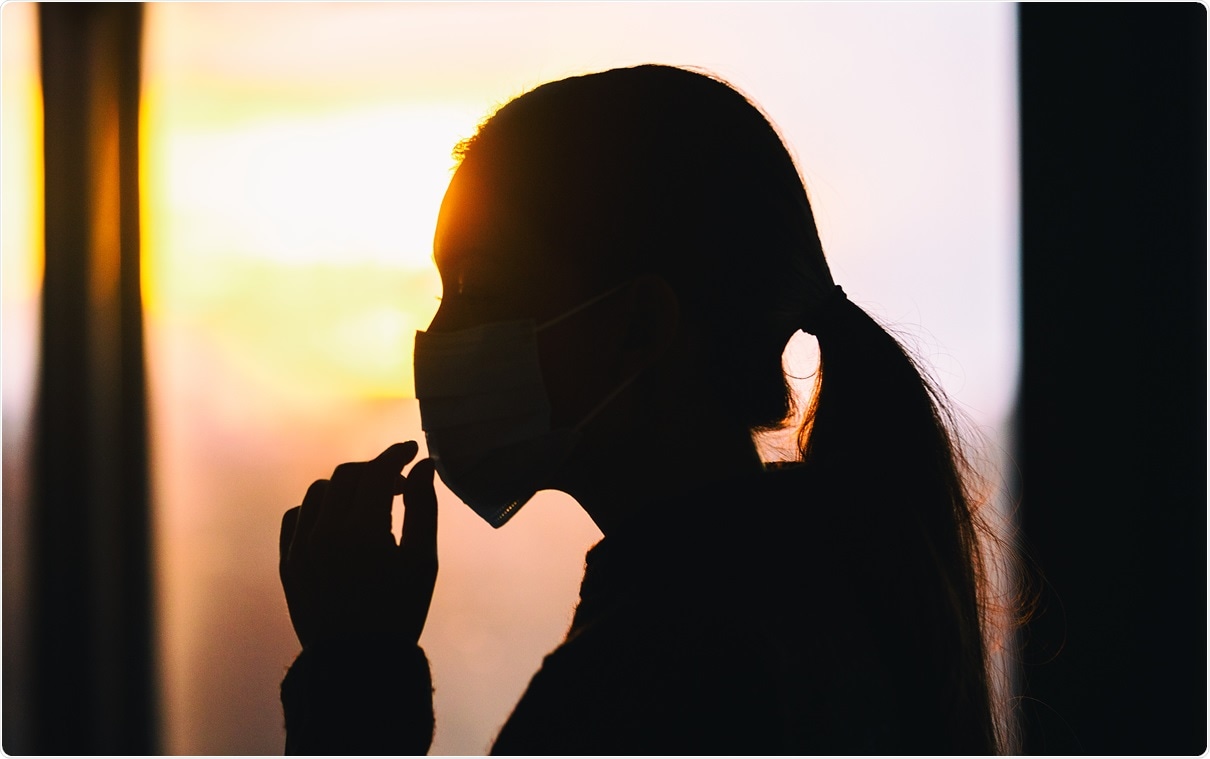Skin disorders on the rise during COVID‐19 pandemic due to infection and PPE use

An increase in personal protective equipment (PPE) use and hygiene measures such as the use of hand sanitizers, hand washing, and mask usage during this pandemic have increased the frequency of dermatological diseases.
Additionally, there are many exanthems and cutaneous issues associated with severe acute respiratory syndrome coronavirus 2 (SARS-CoV-2) infection itself. Moreover, adverse dermatological reactions to prescription or over-the-counter drugs have also been reported.

Study shows a wide range of dermatological issues related to SARS-CoV-2 infection and PPE use
A recent review article published in the Journal of Cosmetic Dermatology attempts to identify and compile a list of skin disorders reported so far during this pandemic using data from PubMed on cutaneous manifestations in COVID-19 disease. The findings showed many dermatological issues ranging from those related to the infection and other dermatitides linked to PPE use by healthcare workers.
An array of skin manifestations, including hives, vesicular, and erythematous eruptions have been reported to be related to SARS-Cov-2 infection, some of which are seen in other viral infections. However, there were some skin findings, such as the chilblains that were specific to COVID-19 and not commonly seen in relation to other viral infections.
While chilblains were seen in a younger population as a late manifestation of the infection, a similar finding, of acro-ischemic lesions was reported in older populations and signified a worse prognosis compared to patients presenting with chilblains.
Multisystem inflammatory syndrome primarily seen in children is another important finding causing mucocutaneous symptoms. Timely diagnosis of this syndrome is vital as it affects multiple organ systems and can result in many complications such as myocardial injury, kidney injury, hypercoagulability, and respiratory distress.
Despite the association of multiple pandemic-related factors such as dermatoses, psychological stress, and the use of harsh chemicals and irritants to itch and its considerable effect on the patients' quality of life, there is minimal data available about itching.
Hair and nails were also affected in COVID-19, like the ones seen with other viral infections. Although the underlying mechanism of these hair and nail disorders is not clear yet, it is supposed to be linked to microvascular injury and coagulopathy. With respect to hair findings, telogen effluvium was a key finding associated with the massive physiologic and psychologic stress in COVID-19 patients. However, the finding of androgenetic alopecia and grey hair associated with severe COVID-19 was surprising, and it offers insights into new treatment modalities with anti-androgens.
Use of PPE and resulting skin disorders in healthcare workers
Skin disorders in healthcare workers are said to be a result of increased use of PPE and enhanced hygiene measures such as gloves, goggles, and gowns as per COVID protocols. Skin disorders caused by these protective measures have been attributed to multiple factors such as the hyperhydration effect seen with prolonged use of the occlusive gear trapping moisture and coupled with friction leads to skin barrier defects and increased risk of contact dermatitis. Excessive handwashing also causes irritant contact dermatitis. Folliculitis is most likely a result of occlusion caused by PPE use.
Multiple studies have noted an increase in the risk of skin damage with the increase in the duration of PPE use. An exacerbation of pre-existing skin diseases has also been noted such as increase in acne flares, seborrheic dermatitis, and rosacea.
There can be multiple factors behind these exacerbations, including the increase in psychological stress and obstruction of the skin by PPE use.
Based on these findings, it is crucial for at-risk persons like healthcare workers to avoid such consequences by avoiding using very hot water, refraining from prolonged glove use, frequently moisturizing to nourish the skin, and maintaining the skin barrier and using alcoholic hand sanitizers reasonably.
Findings highlight the importance of recognizing and treating dermatological disorders associated with COVID-19
In summary, many skin diseases have emerged during this pandemic caused by various factors such as viral infection, consequences of PPE use, extra hygiene measures, and exacerbation of pre-existing skin disorders. According to the authors, it is very important to identify and treat these dermatological outcomes for various reasons.
Skin findings associated with the infection can guide HCPs in the diagnosis, especially in cases with mild symptoms. Skin diseases caused by protective measures may become severe and limit the workplace effectiveness of individuals, which can be detrimental, especially in the case of healthcare workers. Thus, it is crucial to recognize and treat these dermatological disorders associated with COVID-19.
- Akl, J., El-Kehdy, J., Salloum, A., Benedetto, A. and Karam, P. (2021), Skin Disorders associated with the COVID-19 Pandemic: A Review. Journal of Cosmetic Dermatology. Accepted Author Manuscript. https://doi.org/10.1111/jocd.14266, https://onlinelibrary.wiley.com/doi/10.1111/jocd.14266
Posted in: Men's Health News | Medical Research News | Medical Condition News | Women's Health News | Disease/Infection News | Healthcare News
Tags: Acne, Alopecia, Chemicals, Chilblains, Children, Coronavirus, Coronavirus Disease COVID-19, Dermatitis, Dermatology, Drugs, Folliculitis, Frequency, Hair, Healthcare, Hives, Hygiene, Kidney, Nails, Pandemic, Personal Protective Equipment, PPE, Respiratory, Rosacea, SARS, SARS-CoV-2, Seborrheic Dermatitis, Severe Acute Respiratory, Severe Acute Respiratory Syndrome, Skin, Stress, Syndrome

Written by
Susha Cheriyedath
Susha has a Bachelor of Science (B.Sc.) degree in Chemistry and Master of Science (M.Sc) degree in Biochemistry from the University of Calicut, India. She always had a keen interest in medical and health science. As part of her masters degree, she specialized in Biochemistry, with an emphasis on Microbiology, Physiology, Biotechnology, and Nutrition. In her spare time, she loves to cook up a storm in the kitchen with her super-messy baking experiments.
Source: Read Full Article